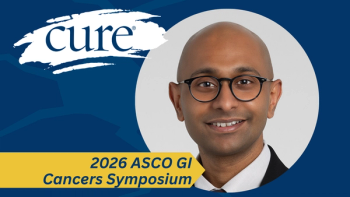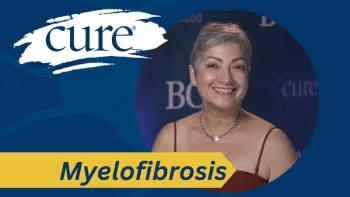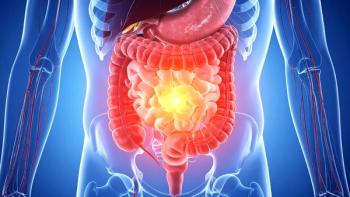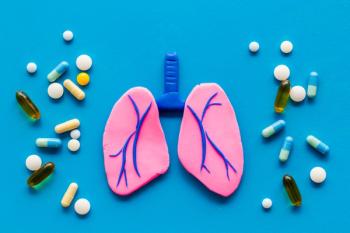
How a Stem Cell Donor Saved the Life of a Patient with Leukemia
After a stem cell donor saved the life of a patient with a rare leukemia, the two finally had a “very emotional” meeting this past spring in New York.
The power of an allogeneic stem cell transplant saved the life of Mikhail Rubin, thanks to a donation made by Matt Sakofs.
“I feel good, thanks to a great job done by doctors,” Rubin said during an interview alongside Sakofs with CURE®. “And of course, I thank you, my donor, who is in front of me (on Zoom). It was a virtuous thing to do. He didn’t know me, but he decided to do this donation that saved my life.”
Rubin, 73, who resides in the Bay Area of California, received a diagnosis of chronic myelomonocytic leukemia (CMML), a rare form of leukemia in 2018. According to the American Cancer Society, CMML is a type of cancer that begins in the blood-forming cells in the bone marrow and invades the blood.
Shortly after receiving the diagnosis, Rubin was told by his doctors at Stanford Cancer Institute that a bone marrow transplant would cause a risk of toxicities, and that he would have to wait before receiving any type of treatment.
In 2021, Rubin’s blood cell counts worsened, and he required treatment. However, instead of receiving a bone marrow transplant, Rubin enrolled in a clinical trial where he received an allogenic stem cell transplant (transplant from another individual) through a stem cell therapy called Orca-T.
Sakofs, 33, who resides in Fairfield, Connecticut with his wife and two-year old daughter, had donated stem cells when he was on a trip in Israel several years prior.
“(The stem cell donation) occurred about over 10 years ago, at this point now, where I happened to be on a birthright trip in Israel, and there was a registry booth just set up,” Sakofs said, “They were looking for individuals to swab the inside of their cheek, it was literally like a 10-second procedure.”
Sakofs was told he would be contacted if there was ever a match.
In March of 2021, Sakofs received the call, which he described was “out of the blue.”
“It was so unexpected," Sakofs said, "based on something that I had done (more than ten years ago) that didn’t even take too much time to do.”
Stem cell donation, just as Sakofs did, and getting onto the registry is “a piece of cake,” according to Dr. Jeffrey Schriber, the chief of hematologic malignancies at City of Hope Phoenix, who specializes in both hematology (study of blood) and hematologic oncology.
“Sometimes they'll take a blood sample, sometimes they'll take the cheek swab, it's quite common that you'll see big donor registrations where you can go up for free and do this,” Scriber told CURE® in a separate interview.
“There's now data that suggests rather than giving more chemo and trying to get the disease under control, which some people thought was really important, just go right ahead (with a matched donor’s stem cells),” Schriber noted. “Because although the results are better if there's less disease, the problem is a number of those patients never get to transplant.”
Schriber also explained that patients who receive an allogeneic stem cell transplant may experience symptoms for about three months before feeling better.
“Some patients get a very sore throat, often they'll need blood transfusions or platelet transfusions, they may get fevers, those are all very common things that we see,” said Schriber. “When the blood counts recover, all that stuff generally gets better. But then, they're at risk for the graft-versus-host-disease (where the donor’s stem cells attack the patient’s healthy cells), the medicines to treat graft-versus-host-disease make it more prone to infectious complications. So, those are all things that can occur.”
He emphasized that after the three months, patients may start to gain their strength back and are “able to resume a normal life and get back to where they want to be.”
Life for Rubin resumed in October of 2021, after receiving stem cells from Sakofs. A year and a half later, the two met in person for the first time this past spring after Sakofs initiated a mutual exchange of information.
“We met in May in New York City at one of the bakeries — a very casual place — but it was very emotional,” Rubin explained. “My son and his wife also came to this meeting, and so we shared our stories.”
Sakofs added that their meeting in New York worked out, as Mikhail was conveniently was coming to visit his family, while Sakofs worked in New York.
“It was a positive feeling that I was actually able to see the results of my donation, which were really just heartwarming. I got to meet some of (Mikhail’s) family, and he was telling me how he gets to see his grandkids and celebrate their birthdays. So, it just made it that much more meaningful, as opposed to just going on site and donating, so I was really glad that I could do that.”
For more news on cancer updates, research and education, don’t forget to




